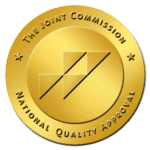Attention-deficit disorders are widely misunderstood, often leading to confusion about their symptoms and how they affect individuals. Many people wonder, “What is ADD disorder?” especially since the term ADD is often used interchangeably with ADHD. While both conditions fall under the same umbrella, there are important distinctions between them. Understanding the difference between ADD and ADHD is essential for identifying symptoms and exploring effective treatments.
This guide breaks down ADD vs ADHD, explaining their symptoms, causes, and treatments to provide clarity for those seeking answers. Whether you are a parent trying to help a child, an adult struggling with focus, or someone looking for a diagnosis, knowing how attention deficit hyperactivity disorder manifests can be the first step toward managing it effectively.
Understanding ADD and ADHD: What’s the Difference?
In the past, ADD (Attention Deficit Disorder) was a widely used term for individuals who experienced attention difficulties without signs of hyperactivity. However, medical professionals now recognize ADD as a subtype of ADHD (Attention Deficit Hyperactivity Disorder) rather than a separate condition. While ADD refers specifically to the inattentive form of ADHD, the broader term ADHD encompasses different types of the disorder, including hyperactive and combined types.
The difference between ADD and ADHD lies in their symptoms. Individuals with ADD primarily struggle with focus, organization, and memory, while those with ADHD may also experience hyperactivity and impulsiveness. This distinction is important when diagnosing and treating the disorder, as different symptoms require different approaches.
How ADD and ADHD Are Diagnosed Today
A diagnosis of attention deficit hyperactivity disorder involves a thorough evaluation by medical professionals. Doctors and psychologists assess behavioral patterns, history, and cognitive function to determine whether an individual meets the criteria for ADHD. Since ADD symptoms in adults can be more subtle than in children, diagnosis may take longer for adults who have developed coping mechanisms to mask their struggles.
Symptoms must be persistent and impact daily life in multiple areas, such as school, work, or relationships. Diagnosis often includes clinical interviews, observation, and standardized tests that measure attention, impulsivity, and executive function.
What Is ADD?
Many people still use ADD to describe the inattentive form of attention deficit hyperactivity disorder, which affects concentration, memory, and focus. Unlike hyperactive ADHD, ADD does not involve excessive movement or impulsivity, making it harder to detect in some individuals.
Common Symptoms of ADD in Adults and Children
The symptoms of ADD vary between children and adults but generally include difficulty maintaining focus, frequent forgetfulness, trouble organizing tasks, and an inability to complete projects. Children with ADD often appear lost in thought, struggle to follow instructions, and misplace items frequently. Adults may experience problems with time management, procrastination, and feeling overwhelmed by daily responsibilities.
Because ADD symptoms in adults can be less obvious, many individuals are only diagnosed later in life when work-related struggles or relationship challenges become more noticeable. Recognizing these signs early can help with managing the condition effectively.
What Is ADHD?
While ADD refers to the inattentive form of the disorder, ADHD includes hyperactive and impulsive behaviors that make symptoms more noticeable.
What Does ADHD Stand For and How It Differs From ADD
ADHD is a neurological condition that affects attention, self-control, and executive functioning. Unlike ADD, ADHD includes symptoms such as excessive fidgeting, impulsive decision-making, and difficulty sitting still. This makes ADHD more commonly diagnosed in children, especially boys, who may display disruptive behaviors in school.
Types of ADHD and Their Symptoms
ADHD is categorized into three main types: inattentive type, hyperactive-impulsive type, and combined type.
Inattentive Type (Previously Known as ADD)
This type, formerly called ADD, is characterized by difficulties in maintaining focus, frequent forgetfulness, and disorganization. Individuals may struggle to complete tasks, daydream often, and have trouble processing detailed instructions. Unlike other forms of ADHD, hyperactivity is not present, making this condition harder to diagnose.
Impulsive-Hyperactive Type
This form of ADHD includes noticeable physical restlessness, frequent interruptions during conversations, and a tendency to act without thinking. Individuals may struggle with waiting their turn, experience mood swings, and have difficulty engaging in quiet activities.

Combined Type
This type includes both inattentive and hyperactive symptoms, meaning individuals may struggle with focus while also displaying impulsive and restless behaviors. The combined type is the most commonly diagnosed form of ADHD.
Causes and Risk Factors of ADD/ADHD
The exact cause of ADD and ADHD is not fully understood, but research suggests a combination of genetic, neurological, and environmental factors. Studies indicate that ADHD runs in families, with genetic influences playing a significant role. Brain imaging studies have also shown differences in dopamine regulation, which affects motivation and attention.
Environmental factors, such as prenatal exposure to nicotine, alcohol, or toxins, may increase the risk of developing ADHD. Additionally, early childhood experiences, such as high-stress environments or lack of structure, can contribute to symptom severity.
How ADD/ADHD Affects Daily Life
Living with ADD or ADHD presents challenges in multiple aspects of life, from academic and professional performance to personal relationships.
Challenges in School and Work Environments
Children with attention deficit hyperactivity disorder may struggle with following instructions, completing assignments, and staying engaged in lessons. In adults, difficulties with time management, organization, and meeting deadlines can create workplace challenges, leading to frustration and self-doubt.
Impact on Relationships and Emotional Health
ADD and ADHD can also affect relationships due to forgetfulness, inattention, and impulsive behavior. Individuals may struggle with active listening, miscommunication, or difficulty following through on commitments. These challenges can lead to frustration among family members and friends. Additionally, many individuals with ADD/ADHD experience anxiety, depression, or low self-esteem due to ongoing struggles with focus and productivity.
Therapies and Treatment Options
Effective treatment for ADD and ADHD typically involves a combination of medication, behavioral therapy, and lifestyle adjustments.
Medication and Behavioral Therapy
Stimulant medications such as Adderall and Ritalin are commonly prescribed to manage ADHD symptoms, helping individuals improve focus and impulse control. Non-stimulant medications are also available for those who do not respond well to stimulants. Cognitive Behavioral Therapy (CBT) is another valuable tool for addressing negative thought patterns and developing better organizational skills.

Lifestyle Adjustments and Coping Strategies
Managing ADD symptoms often requires lifestyle changes, including structured routines, exercise, and mindfulness techniques. Strategies such as using planners, setting reminders, and practicing meditation can improve focus and reduce stress. For children, creating structured learning environments with minimal distractions can be highly beneficial.
Get the Support You Need at the Mental Health Center of San Diego
If you or a loved one is struggling with ADD symptoms in adults or children, professional support can make a significant difference. The Mental Health Center of San Diego offers expert evaluations, customized treatment plans, and ongoing support for individuals managing attention deficit hyperactivity disorder.
Seeking help early can improve focus, relationships, and overall well-being. If you’re ready to take control of your symptoms, schedule a consultation today and start your journey toward a better quality of life.
FAQ
What is an ADD person like?
A person with ADD (Attention Deficit Disorder) often struggles with focus, organization, and memory but does not exhibit hyperactivity. They may daydream frequently, lose track of conversations, and have trouble completing tasks. In adults, ADD can cause difficulties in managing time, staying organized, and maintaining attention at work or in social situations.
What is the difference between ADHD and ADD?
ADD vs ADHD comes down to hyperactivity. ADD refers to the inattentive type of Attention Deficit Hyperactivity Disorder (ADHD) and lacks hyperactive or impulsive behavior. ADHD includes both inattentiveness and hyperactivity, making symptoms more noticeable. Today, ADD is considered a subtype of ADHD rather than a separate diagnosis.
What are the three main symptoms of ADD?
The core symptoms of ADD are:
- Inattention. Easily distracted, forgetful, and struggles to complete tasks.
- Disorganization. Difficulty managing time and prioritizing responsibilities.
- Forgetfulness. Frequently misplacing items and missing deadlines.
Can you lead a normal life with ADD?
Yes, with proper treatment, individuals with ADD symptoms can live successful lives. Medication, therapy, structured routines, and lifestyle changes can help improve focus and organization, making daily life more manageable.
How is ADD diagnosed in adults?
Diagnosing ADD in adults involves clinical interviews, symptom checklists, and cognitive tests. Many adults go undiagnosed until work or relationship struggles highlight their difficulties. Seeking a professional evaluation is key to getting the right treatment.















